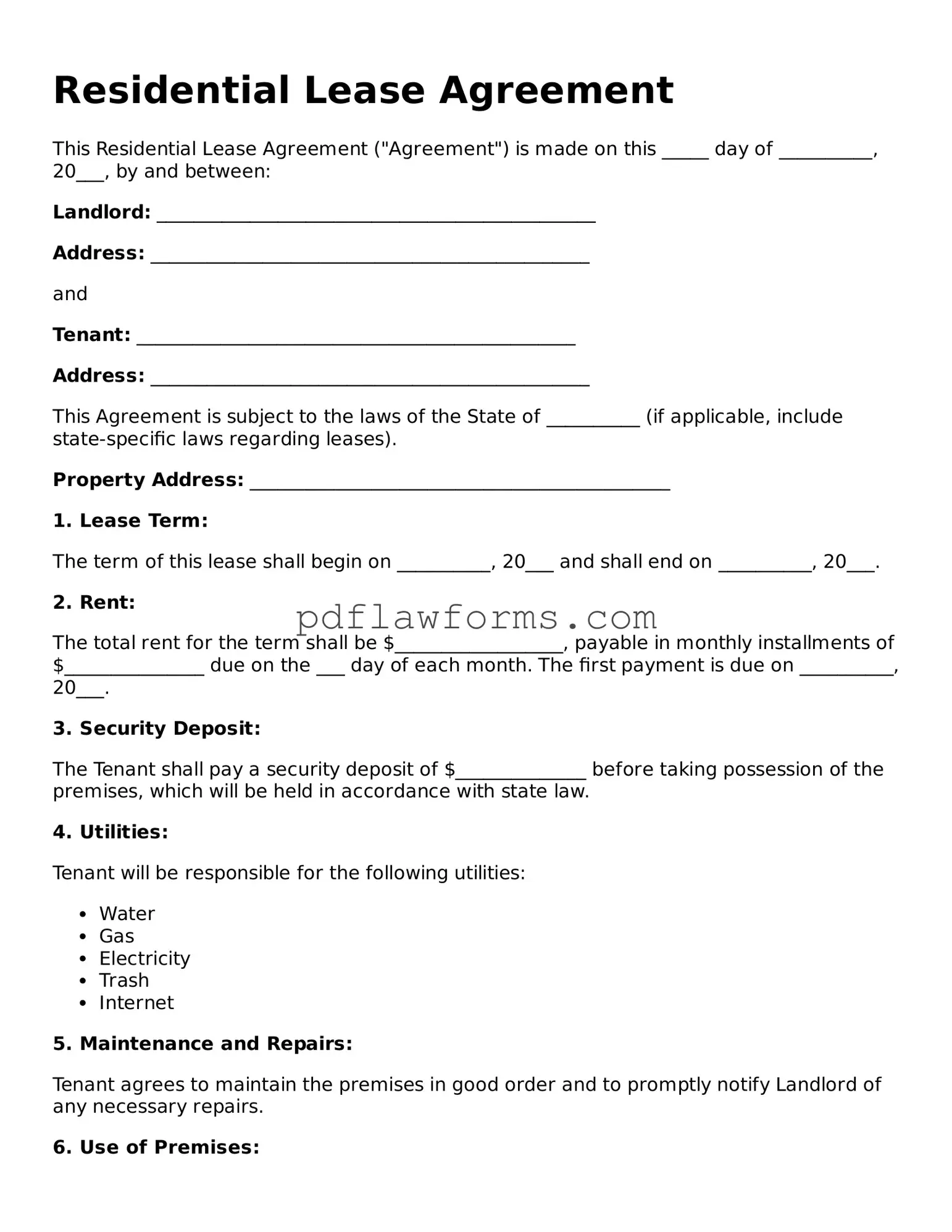Filling out a Lease Agreement form can be a straightforward process, but many people make mistakes that could lead to complications later. One common error is failing to provide accurate information about the rental property. This includes the address, unit number, and any specific details that identify the property. Incomplete or incorrect information can cause confusion and disputes between the landlord and tenant.
Another frequent mistake is neglecting to read the entire document before signing. Many individuals skim through the lease, missing important terms and conditions. This oversight can result in misunderstandings regarding rent due dates, maintenance responsibilities, and other obligations. It's crucial to understand all aspects of the agreement to avoid future conflicts.
Some people forget to include all necessary parties in the lease. If there are multiple tenants, each should be listed to ensure everyone is legally bound by the terms. Omitting a tenant can lead to complications in enforcement and liability issues. Ensuring that all parties are included protects everyone's rights and responsibilities.
Additionally, failing to document any pre-existing conditions of the property is a mistake that can have serious repercussions. Tenants should take the time to note any damages or issues in the property before moving in. This documentation can help prevent disputes over security deposits when the lease ends.
Another common error involves not specifying the lease duration clearly. Whether it's a month-to-month agreement or a fixed-term lease, clarity is essential. Ambiguities in the lease duration can lead to misunderstandings about when the lease begins and ends, affecting both parties' planning.
Some individuals overlook the importance of including a security deposit clause. This clause should outline the amount required, conditions for its return, and any deductions that may apply. Without this information, tenants may find themselves unsure about their financial obligations and landlords may face difficulties in managing deposits.
Finally, failing to understand local laws regarding leases can lead to significant problems. Each state has specific regulations that govern rental agreements. Ignorance of these laws can result in unenforceable terms or illegal clauses. It is advisable to familiarize oneself with local regulations to ensure compliance and protect rights.
